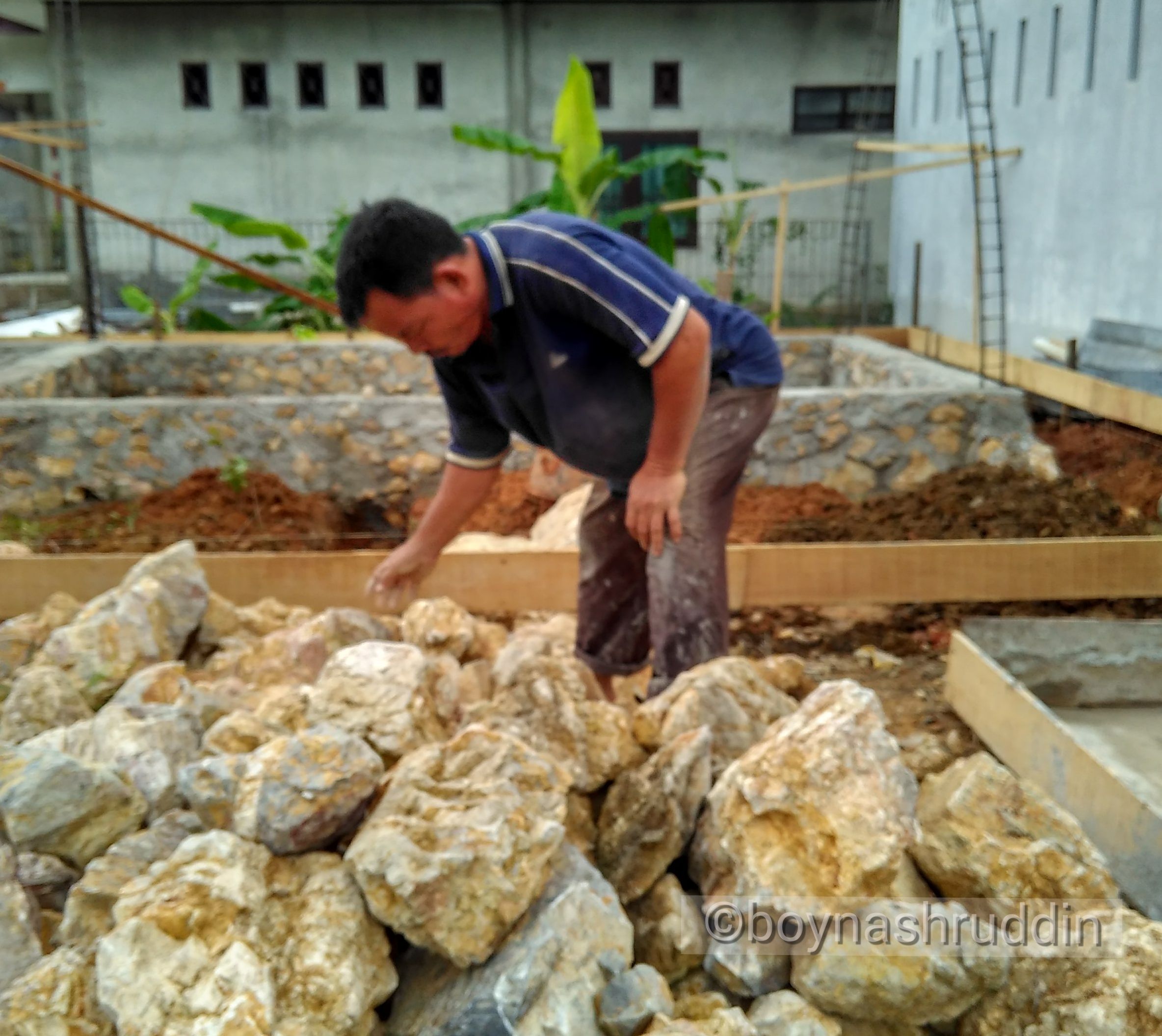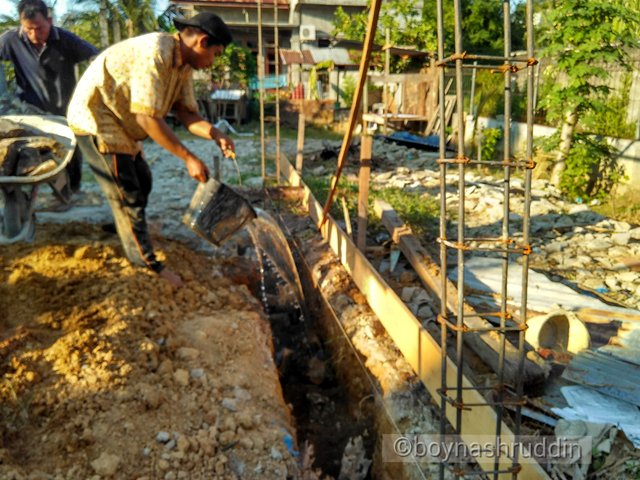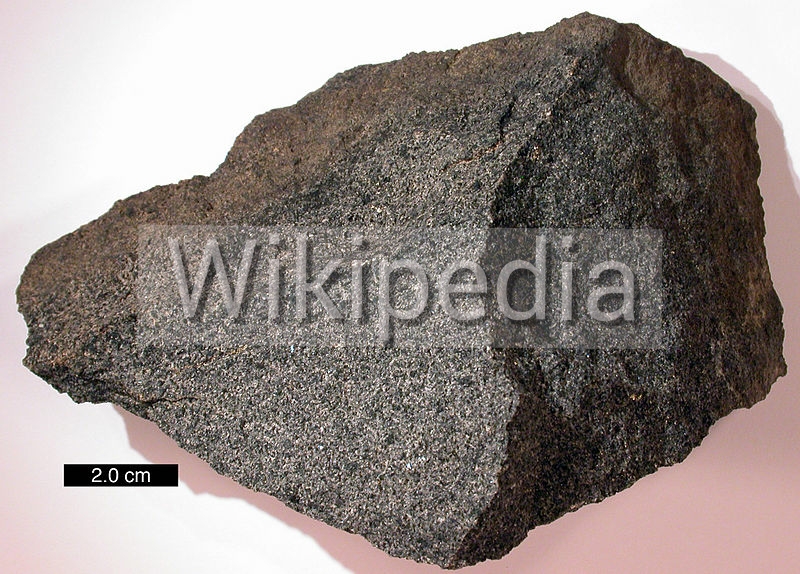Know the Stone for Building Foundation of Homes

A worker looks exhausted lifting the rocks into a hole 60 centimeters wide. Her face flushed and returned to normal, after the stone the size of a human adult hug was stacked into a hole. Sweat flowed from the crown of the man.
"The big rocks, good for the foundation of this house," said the man who is familiarly called Bang Yan.
Bang Yan is a builder who I rent his services to make a house. He's a low-end contractor who often works on private homes in our neighborhood. That day, Bang Yan was just getting ready to dig a new hole for the foundation of my house.
"What kind of stones are good for home foundation?" Ask me to Bang Yan.
This question came out because I did not understand the building technique. Since childhood I do not like such heavy work, though very respectful with hard workers like Bang Yan.
"Both of them are good, if I look at the location of excavation C, the backhoe will be a bit tired to lift these yellow stones, while the black stone like that is very easy, even though its rock resilience is stronger than this yellow stone," said Bang Yan.
I did order two types of mountain stone for the work of the house, first yellow stone and then black stonr.
Many say that the yellow stone is a young stone, still processing into old stone. This also makes people suspect yellow stone is not as strong as black stone. While black stone is a sediment of natural sediment that has long processed into stone. I got a lot of insights about rocks, after the concenes made a simple home for my family.

Many people say our area is prone to earthquakes. For that, building houses in this area should really pay attention to the strength of the foundation for the house is not easy to fall. Especially if you build a house in the former swamp area.
Therefore also some residents in the city I prefer the technique of chicken scratches for the foundation of the house. This technique was created by the Indonesian people after studying the resilience of the coconut tree claws on the coast. But making a house using chicken claw foundation is expensive. At one point the cost of making a chicken clay foundation requires a budget of around IDR 5,000,000 or equivalent to USD 390 (IDR 13.000x USD 1).
)
I built a 10x11 meter house. This means I need 6 points of chicken claw foundation to strengthen the structure of the building. This amount is certainly not enough, but has little to guarantee the resilience of the building. I then calculated the cost I had to spend 6x390 USD equals USD 2,340. If converted to IDR, then I have to spend around IDR 30,000,000 more. And that's only for the service of making six point foundation only. Not including building materials such as stone, jackstone and cement.
Finally I decided to make a regular foundation, with the structure of mountain rocks piled lengthwise in the hole. I do not understand the term foundation like this. To strengthen the structure of this foundation I choose quality natural stone to be able to hold the building in the long term.
While waiting for the foundation work of the house, I casually open the internet page. I am writing the keyword "strong rock for home foundation" in google search engine. Many references are presented in the search engine. I opened one by one until finally got to know many kinds of rocks formed from the hardening of magma and soil.
From a number of rock types emblazoned in that reference, I was interested in the explanation of basalt rocks. This stone is identical to the foundation material that I use to build our little house.
Basalt stones are mentioned formed from the freezing of magma compounds base on the surface or near the surface of the earth. These stones usually form oceanic plates in the world. In the reference that I read it, this basalt stone has a very good grain size, so the mineral content is not visible.
This type of stone is usually massive and hard. Afanitik stone texture, which consists of mineral glasses, plagioklas, and piroksin. In addition, Basalt stones also contain amfibol and black minerals. This Vulcanic mineral content can only be seen in the type of basalt rock-sized quartz grains, which is a type of basalt rock called gabbro.

Still referring to the reference, basalt based on chemicals contained in it can be divided into two types. First alkaline basalt, and both tholeitic basalt.
The difference between the two basalt types can be seen from the content of Na2O and K2O. For the same SiO2 concentration, the alkali basalt has a higher Na2O and K2O content than the tholeitic basalt. (Source: future20
Basalt stones are used for various purposes, one of them as an aggregate in construction projects. Basalt, in reference to what I read, is also often used as a foundation of roads, concrete aggregates, asphalt/pavement aggregates, and rail ballasts. Basal can also be cut and polished into a building ornament such as floor tiles and monuments.
Do you know?
Approximately 64.7% of the Earth's crust by volume consists of igneous rocks; making it the most category. Of these, 66% were basalt and gabbros, 16% were granite, and 17% granodiorite and diorite. Only 0.6% are syenites and 0.3 peridotites and dunites. The oceanic crust is a 99% basal, which is a frozen rock mafic composition. Granite and similar rocks, known as meta-granitoids, form much of the continental crust. More than 700 kinds of igneous rocks have been described, mostly formed beneath the surface of the earth's crust. It has diverse properties, depending on the composition and the temperature and pressure conditions in which they are formed. (Source: Wikipedia)
Based on these references I got a lot of insight into the stone. I now understand how the process of formation of stones such as basalt, granite, sedimentary stone, limestone and other types of rocks. In general, rocks are formed from the hardening of magma and animal shells. In addition, the rock is also formed from gas deposits and soil. The process of stone formation takes up to millions of years. So the rocks enter in natural substances that can not be renewed just like other minerals like oil and fossil gas. Hmmm ... It's an interesting thing. I hope to have chosen the right stone for the foundation of my house building.[]
BAHASA
Seorang pekerja terlihat kepayahan mengangkat batu-batu ke dalam lubang selebar 60 centimeter. Wajahnya memerah dan kembali normal, setelah batu seukuran pelukan manusia dewasa itu ditumpuk ke dalam lubang. Peluh mengalir dari ubun-ubun pria tersebut.
"Besar-besar batunya ya. Bagus buat pondasi rumah ini," kata pria yang akrab disapa Bang Yan itu.
Bang Yan merupakan tukang bangunan yang saya sewa jasanya untuk membuat rumah. Dia kontraktor kelas bawah yang sering mengerjakan rumah pribadi di lingkungan kami. Hari itu, Bang Yan baru siap menggali lubang baru untuk pondasi rumah saya.
"Sebenarnya batu-batu seperti apa ya yang bagus untuk pondasi rumah?" Tanya saya kepada Bang Yan.
Pertanyaan ini keluar karena saya awam dengan teknik bangunan. Sejak kecil saya kurang menyukai pekerjaan berat seperti itu, meskipun sangat hormat dengan para pekerja keras seperti Bang Yan.
"Dua-duanya bagus. Kalau saya lihat di lokasi galian C, backhoe akan sedikit kepayahan mengangkat batu-batu kuning ini. Sementara batu hitam seperti itu sangat mudah, meski ketahanan batunya lebih kuat dari batu kuning ini," ujar Bang Yan, mencoba menjelaskan semampunya.
Saya memang memesan dua jenis batu gunung untuk pengerjaan rumah. Satu jenis batu berwarna kuning. Banyak yang mengatakan kalau batu kuning itu adalah batu muda, yang masih berproses menjadi batu tua. Hal ini pula membuat orang menduga batu kuning tidak sekuat batu hitam. Sementara batu hitam merupakan endapan sendimen alam yang telah lama berproses menjadi batu. Saya mendapat banyak wawasan mengenai batu, setelah konsen membuat rumah sederhana untuk keluarga saya.
Banyak orang yang mengatakan daerah kami rawan gempa. Untuk itu, membangun rumah di kawasan ini harus benar-benar memperhatikan kekuatan pondasi agar rumah tidak mudah rubuh. Apalagi jika membangun rumah di bekas kawasan rawa-rawa.
Sebagian warga di kota saya lebih memilih teknik cakar ayam untuk pondasi rumah. Teknik ini diciptakan oleh orang Indonesia setelah mempelajari ketahanan cengkraman pohon kelapa di pesisir pantai. Namun membuat rumah menggunakan pondasi cakar ayam membutuhkan biaya mahal. Per satu titik biaya pembuatab pondasi cakar ayam membutuhkan anggaran sekitar IDR 5.000.000 atau setara USD 390 (IDR 13.000x USD 1).
Saya membangun rumah seluas 10x11 meter. Artinya saya memerlukan 6 titik pondasi cakar ayam untuk memperkuat struktur bangunan. Jumlah ini tentu saja tidak cukup, tetapi sudah sedikit menjamin ketahanan bangunan. Saya kemudian mengkalkulasi biaya yang harus saya keluarkan yaitu 6x390 USD sama dengan USD 2.340. Jika dikonversikan ke IDR, maka saya harus menyiapkan uang sekitar IDR 30.000.000 lebih. Dan itu hanya untuk jasa pembuatan enam titik pondasi saja. Belum termasuk bahan bangunan seperti batu, pasir dan semen.
Saya akhirnya memutuskan membuat pondasi biasa, dengan struktur batu-batu gunung ditumpuk memanjang di dalam lubang. Saya kurang paham istilah pondasi seperti ini. Untuk memperkuat struktur pondasi inilah saya memilih batu alam berkualitas agar mampu menahan bangunan dalam jangka waktu lama.
Sembari menunggu pengerjaan pondasi rumah, saya iseng-iseng membuka laman internet. Saya menulis kata kunci "batu kuat untuk pondasi rumah" di mesin telusur google. Banyak referensi yang disajikan di mesin pencarian tersebut. Saya membuka satu persatu hingga akhirnya mengenal banyak jenis batu yang terbentuk dari pengerasan magma dan tanah.
Dari sejumlah jenis batu yang terpampang dalam referensi itu, saya tertarik dengan penjelasan batu basalt. Batu ini identik dengan bahan pondasi yang saya pergunakan untuk membangun rumah kecil kami.
Batu basalt disebutkan terbentuk dari hasil pembekuan magma berkomposisi basa di permukaan atau dekat permukaan bumi. Batu ini biasanya membentuk lempeng samudera di dunia. Dalam referensi yang saya baca itu, batu basalt ini memiliki ukuran butir yang sangat baik, sehingga kandungan mineralnya tidak terlihat.
Batu jenis ini lazimnya bersifat masif dan keras. Tekstur batu afanitik, yang terdiri atas mineral gelas vulkanik, plagioklas, dan piroksin. Selain itu, Batu basalt juga mengandung amfibol dan mineral hitam. Kandungan mineral Vulcanik ini hanya dapat terlihat pada jenis batuan basalt berukuran butir kuarsa, yaitu jenis dari batuan basalt yang bernama gabbro.
Masih merujuk referensi tersebut, basalt berdasarkan zat kimia yang terkandung di dalamnya dapat dibedakan menjadi dua tipe. Pertama basalt alkali, dan kedua basalt tholeitik.
Perbedaan di antara kedua tipe basalt itu dapat dilihat dari kandungan Na2O dan K2O. Untuk konsentrasi SiO2 yang sama, basalt alkali memiliki kandungan Na2O dan K2O lebih tinggi daripada basalt tholeitik. (Source: future20)
Batu basalt digunakan untuk berbagai macam keperluan, salah satunya sebagai agregat dalam proyek kontruksi. Basalt, dalam referensi yang saya baca, juga sering dimanfaatkan sebagai pondasi jalan (landasan), agregat beton, agregat aspal/trotoar, dan ballast kereta api. Basal juga dapat dipotong dan dipoles menjadi sebuah batu ornamen bangunan seperti ubin lantai dan monumen/tugu.
Tahukah anda?
Sekitar 64,7% kerak bumi berdasarkan volume terdiri dari batuan beku; menjadikannya kategori yang paling banyak. Dari jumlah tersebut, 66% adalah basal dan gabbros, 16% adalah granit, dan 17% granodiorit dan diorit. Hanya 0,6% yang merupakan syenites dan 0.3 peridotites dan dunites. Kerak samudera adalah basal 99%, yang merupakan batuan beku komposisi mafik. Granit dan batuan sejenis, yang dikenal sebagai meta-granitoida, banyak membentuk kerak benua. Lebih dari 700 jenis batuan beku telah dijelaskan, kebanyakan terbentuk di bawah permukaan kerak bumi. Ini memiliki sifat yang beragam, tergantung pada komposisi dan suhu dan kondisi tekanan di mana mereka terbentuk. (Source: Wikipedia)
Berdasarkan referensi tersebut saya mendapat banyak wawasan mengenai batu. Saya kini sedikit paham bagaimana proses terbentuknya batu seperti basalt, granit, batu sedimen, batu kapur dan jenis bebatuan lainnya. Secara umum, batu terbentuk dari pengerasan magma dan cangkang hewan. Selain itu, batu juga terbentuk dari endapan gas serta tanah. Proses pembentukan batu membutuhkan waktu hingga jutaan tahun. Maka batu masuk dalam zat alam yang tidak bisa diperbaharui sama seperti mineral lainnya serupa minyak dan gas fosil. Hmmm... Ini hal yang menarik. Saya berharap telah memilih batu yang tepat untuk pondasi bangunan rumah saya.[]
Reference
great post, I think you have choosen the right stones and the right man to do the job.
Best regards from Thailand
Tom
followed and upvoted
Thank you. I think so do that. Great meet you
yes, great to meet you too..
Congratulations! This post has been upvoted from the communal account, @minnowsupport, by boynashruddin from the Minnow Support Project. It's a witness project run by aggroed, ausbitbank, teamsteem, theprophet0, someguy123, neoxian, followbtcnews/crimsonclad, and netuoso. The goal is to help Steemit grow by supporting Minnows and creating a social network. Please find us in the Peace, Abundance, and Liberty Network (PALnet) Discord Channel. It's a completely public and open space to all members of the Steemit community who voluntarily choose to be there.
If you would like to delegate to the Minnow Support Project you can do so by clicking on the following links: 50SP, 100SP, 250SP, 500SP, 1000SP, 5000SP. Be sure to leave at least 50SP undelegated on your account.
good post